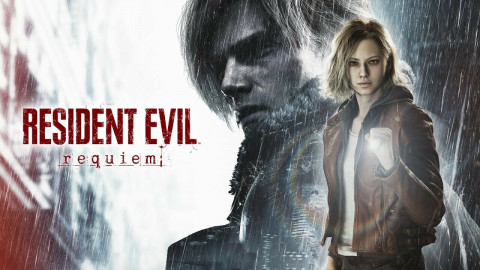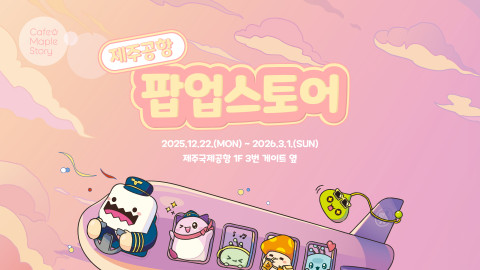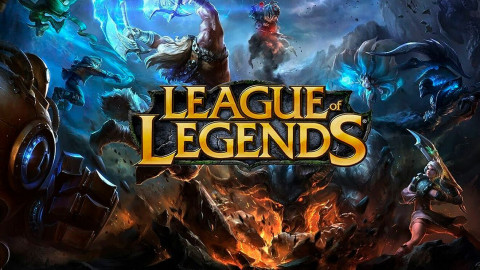Vanilla World of Warcraft, a massively multiplayer online role-playing game (MMORPG) originally released in 2004, is coming back. After years of players begging and pleading with Blizzard to release legacy servers (and to, ahem, stop shutting down illegal private servers), the game’s relaunch was announced last November at BlizzCon 2017.
Objectively, World of Warcraft’s original iteration is something of a hot mess. Its gameplay is marked by unnecessary tedium and hardship; legendarily poor class balancing that left swaths of specializations unplayable; underwhelming boss mechanics; and, loads more fundamental flaws. And yet, it is one of the most beloved games in history whose relaunch will bring swarms of retired gamers out of the woodwork.
See, its numerous issues aside, Vanilla is ultimately adored to this day because it discovered in 2004 what games and social media platforms still struggle to find in 2018: the perfect formula for building tangible, enduring relationships and communities in online spaces. Fourteen years ago, the value of online community building may have gone unrecognized, but as our society becomes increasingly addicted to and reliant upon online interaction, it is everything.

WoW: Online Community Building 101
Community building on a large scale, online or offline, is deceptively challenging. Offline, communities most often develop out of a necessity for companionship in schools and workplaces, the “real world” institutions that command most of our time. These establishments facilitate meaningful interactions with an array of people each and every day, and we benefit from (a) the relationships built as a result of those interactions and (b) simply from the exposure to people we may ordinarily avoid.
Comparable social pressure and incentive is difficult to replicate online, but multiplayer gaming, located at the intersection of online superficiality and real world tangibility, is perfectly suited for the task. Unlike social media platforms that encourage mass consumption and participatory conditioning (we’ll get to that later), multiplayer games can reward collaboration, teamwork, and companionship between diverse peoples, and it is often in players’ best interests to invest in long-term friendships.
The gaming industry already has a stake in community building, actually. If online games – your World of Warcrafts, your Counter-Strikes, your Fortnites – are houses, then their gameplay is the 1000 thread count Egyptian cotton sheets, the indoor swimming pool, and the 2.5 baths, while the communities that are built from them are the support beams keeping the whole structure standing.
"the average Vanilla player was a part of at least four communities: their clique of close friends; their raid team; their guild; and, their realm"
Serving as the context for how friends meet is the best insurance policy any game can have. If a game can continually build enduring relationships and communities, then its player base will stick around through thick and thin because their friends will serve as continual reason to keep playing, even when the product itself struggles to capture an individual’s interest. The peer pressure to play and promise of social interaction is enough to keep gamers engaged even when the sheets decay, the pool turns green, and the plumbing breaks, so to speak.

Vanilla, when not viewed through the rose-tinted lenses of nostalgia, suffered from all of the above and more. Relative to World of Warcraft’s most recent expansions, it was poorly balanced, lacked quality of life improvements, and offered little reward for players’ time investment. But none of these shortcomings, nor any others, were fatal because Vanilla offered two vital, now defunct social features: realm exclusivity and guilds.
Early on, characters were completely restricted to the server they were created on. It was not possible to encounter players from other servers out in the world, much less queue into them in battlegrounds or clear end-game content together. This feature would later be abolished in the name of convenience and low-pop realms, but dissolving the barriers between servers and turning the massive World of Warcraft into one giant community sacrificed the relative intimacy that made the game unique.
Self-contained servers made Vanilla feel small and grounded regardless of how many millions of players were actually active. Players became familiar, even if from afar, with the other people on their realm; rivalries developed, reputations formed, and each server was able to develop its own identity. Rather than feeling like just another insignificant username in a sea of insignificant usernames, players felt attached to and a part of a distinct ecosystem.
"the dense, multi-layered social structure Vanilla cultivated mirrors those commonly found in schools and workplaces,"
Next, the abundance and necessity of guilds further personalized each player’s experience. Because there were no tools to make PUGs (pick-up groups) easy to form, any player looking to clear end-game content needed to join a guild; it simply was not feasible to play the game in isolation.
Every raider developed a rapport with at least 39 other players because they spent hours working together each week, and then within these massive 40-man raid teams, smaller cliques developed. Consequently, the average Vanilla player was a part of at least four communities: their clique of close friends; their raid team; their guild; and, their realm.
Furthermore, because in gaming, the majority of defining features of a person are initially hidden behind a collection of pixels, conversation and connection between players who may ordinarily never interact in person is possible before judgement or damaging preconceived notions can enter the picture.
Guilds tended to be exceptionally diverse as a result, capable of uniting people of all ages, races, faiths, sexual identities, political affiliations, etc. into one team intent on having fun and accomplishing things together.
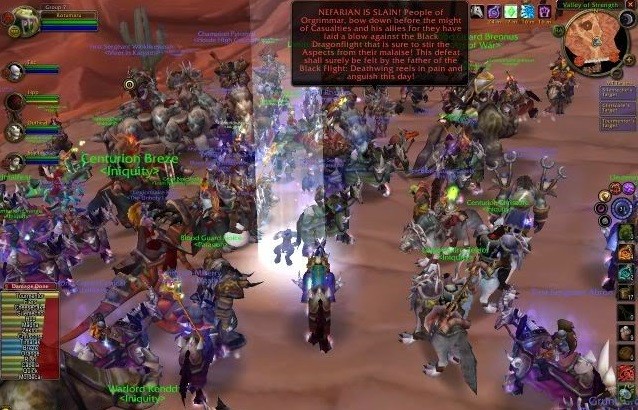
Here it is also worth noting that another of Vanilla’s accomplishments was attaching consequences to toxic online behavior. Again, because servers were self-contained, bad reputations spread relatively quickly, and because anyone wanting to clear end-game content needed to be in a guild, there was reason to play nice with others. After all, no reasonable raid team wants to tolerate a jerk for hours on end. Guild communities also insulated players from undesirables by limiting members’ need to interact with random players, making for a more pleasant online experience than most.
Essentially, the dense, multi-layered social structure Vanilla cultivated mirrors those commonly found in schools and workplaces, the “real life” institutions that spawn many people’s most impactful and long-lasting relationships. Effectively recreating those structures online is a challenge modern society faces as we become increasingly dependent upon online interaction -- luckily, a video game released in 2004 was onto something.
. . .
Examining our current social ecosystem
As it stands, few online mediums effectively cultivate relationships, community, and culture in a way similar to in-person institutions, yet our lives exist on and are defined by the Internet. Social media platforms -- Twitter, Facebook, Instagram, YouTube, etc. -- are in the business of reaction, not interaction. These sites are designed to generate as many views and responses, good or bad, as possible; to encourage the mass consumption of content without pause to digest.
And difficult as it may be to admit, a few likes shared amongst mutuals, a “happy birthday!” reply tweet once a year, and the occasional recognition of someone in Twitch chat do not a friendship, nor community, make. Subsisting on these sorts of interactions is not uncommon in 2018, but ultimately, a lack of meaningful connections with others is damaging.
The consequence of these platforms overshadowing so much of everyone’s day-to-day is a veritable epidemic of loneliness, isolation, and dehumanization of others. Numerous studies, including an extensive one published last year in the American Journal of Preventive Medicine, have linked social media usage to heightened feelings of loneliness and perceived isolation, and books like Bowling Alone: The Collapse and Revival of American Community have long since chronicled the consequences of the decline of in-person interaction.
"the rapid, low commitment gameplay gripping the gaming industry aligns perfectly with the way that we consume content,"
Cyberbullying and online toxicity are ever-growing problems, especially for younger generations entering the space. The difficulty some find in humanizing those they cannot see is nothing new, nor is the lack of responsibility people feel for their online behavior.
Social media has also failed to be the revolutionary unifier of diverse peoples that we once thought it might be. Data analysis has shown time and time again that like-minded people flock together, creating fractured, heterogenous spheres of influence and veritable echo chambers that have had damaging impacts on everything from social discourse to political rhetoric.

None of this is to say that social media is inherently bad or that we should all go delete our Twitter accounts, necessarily. Society is too far gone in that respect anyway. Like it or not, we are not going to return to a screenless reality in which everyone’s favorite pastimes are reading books and strolling through the forest, yet solutions to the rise of the digital age are often just that -- delete your accounts; swap your smartphone for a Nokia; maybe unplug your router; cut yourself off from technology.
That is not going to happen on any large scale. The Internet -- and our collective addiction to entertainment -- is here to stay, and our aim should not be to revolt against it, but to reform it. We need to create more online spaces that demand meaningful socialization, long-term relationships, and healthy communities comprised of diverse peoples in order to offset the droves of fleeting, meaningless interactions most online platforms currently churn out.
In other words? We need more classic World of Warcrafts.
. . .
Abandoning socialization as a core tenet of gaming
Now at this point you may be thinking: “But Amelia, guilds still exist. World of Warcraft still exists -- there’s a new expansion next month!” -- and you would be right. But in 2010, with the release of Cataclysm, Blizzard made the first in a series of good-intentioned, yet fatal decisions to choose convenience over community: it released Looking For Group (LFG).
From there, Looking For Raid (LFR) was spawned, and then Group Finder was incorporated into the game rather than left as an independent addon. As the motives to join a guild began to rapidly disintegrate, garrisons and class halls, added in Warlords of Draenor and Legion, respectively, compounded players’ in-game isolation. Personal loot tables then became exceedingly common, rewarding selfish play unlike ever before, and flexible raid sizes eliminated existing casual raid teams’ only reason to seek out new players.

Earlier this year, long-time World of Warcraft content creator “Preach Gaming” released a YouTube series documenting his experience clearing end-game content entirely through PUGs, intending to investigate whether frequent complaints of toxicity were legitimate. What he concluded, however, was that the selfish, single-player approach to the game is miserable and unrewarding.
“You are investing so much time and, for many of us, so much effort to get nothing -- to get absolutely nothing at all, and that’s really sad as well,” he said. “My advice, as always, is to find a group of friends [or] look for an organized guild -- doesn’t have to be a Mythic guild -- … because I truly believe that this is the worst World of Warcraft experience you can give yourself.”
His experiences reflected those of thousands of players who have surrendered to the selfish, impersonal, and all too often toxic world of PUG content, but without truly compelling reason to engage in the messy process of finding and committing to a guild, hoards of players will always choose the path that at least appears easiest or most convenient.
"stripping away the social element of gaming works for battle royale but doing so is a dangerous gamble for any title looking for longevity,"
In Legion, it is easier to pick and choose successful PUGs rather than commit to one team long-term; it is easier to raid whenever you feel like it than on someone else’s schedule; it is easier to find a PUG than it is to find a guild you mesh with; and, it is easier to open a cache from follower missions than it is to defeat bosses. This single-player playstyle is now viable in a way that it never was in World of Warcraft’s earliest iterations, and it must only seem more convenient than the alternative for the playerbase to embrace it.
The trend toward isolating, low commitment gameplay is not unique to World of Warcraft, though. Online multiplayer gaming may have more potential than most mediums to combat the isolation, loneliness, and dehumanization that results from online life, but that does not mean every title has unlocked it. Anyone who has played ranked Overwatch or queued for a random Legion heroic knows that most of the interactions in online gaming can be just as superficial and fleeting as those on social media.
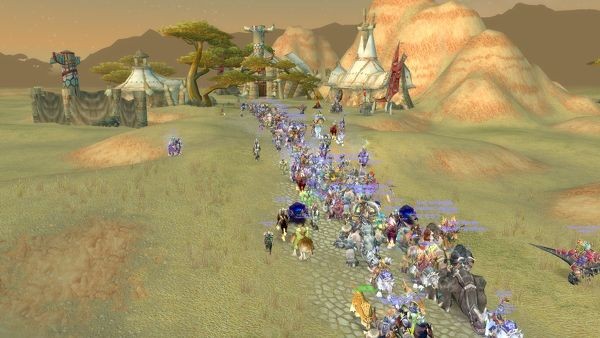
In fact, the higher degree of anonymity games offer can sometimes breed even more toxicity, and multiplayer gaming titles are trending further away from socialization as a core tenet. The massively popular battle royale genre, for example, thrives on selfish, single-player, low commitment gameplay. Duos and squads exist for partnering up with pre-existing friends, but otherwise, there are few tools, nor reasons, to interact with others.
Likely as a result of the short-form nature of social media, our attention spans are now shorter and our desperation for entertainment greater. We burn through content – games, YouTube videos, Netflix shows, social trends, news topics, etc. – at hyperspeed, jumping from one fleeting bit of entertainment to the next over and over again.
The rapid, low commitment gameplay gripping the gaming industry aligns perfectly with the way that we consume content. Consequently, building a sustainable product in this new landscape is challenging, but while the game has changed, old school principles still apply – community is a surefire way to keep people engaged.
Traditional sports are built on said old school principles. Take a look at baseball – the sport has endured for decades upon decades despite being widely considered one of the most boring pastimes because baseball games serve as great context for people to meet. Relatively few people are enamored with the sport, but many will happily attend a baseball game solely to hang out with friends and eat some bad food. Similarly, people who have not watched a single football game all year will, without fail, gather each February at Super Bowl Sunday parties all across the country simply for an excuse to socialize.

Stripping away the social element of gaming works for battle royale but doing so is a dangerous gamble for any title looking for longevity. Without personal relationships and communities underlying each person’s interest in a game, all that is left to keep them engaged is the gameplay itself, and, well…people get bored. As indomitable as titles like Fortnite seem now, they will not thrive forever if tangible communities are not built out of them.
. . .
Return to Azeroth
Despite the anti-social gamer stereotype, World of Warcraft’s earliest editions thrived because socialization was an essential element of gameplay. Each player was required to develop meaningful, long-term relationships with other players in order to be successful, and in turn, those relationships would keep them committed to the game even when their personal interest waned.
Vanilla World of Warcraft’s return to mainstream play in a gaming industry that has both grown exponentially and changed drastically will be one of the most fascinating and telling industry events of the coming years. Its boom or bust will indicate whether time-consuming, socially-demanding online platforms still have a place in a culture that values rapid content consumption and high quantities of fleeting, insignificant interactions.
Its relaunch will expose a social side of online gaming to a new generation of players who have been deprived of it and may now need it more than ever. And maybe -- just maybe -- Vanilla’s success fourteen years after its initial release will be the catalyst for a shift in game development towards community and away from isolation.
Sort by:
Comments :11
-
2

level 1 Bryan
That was a perfectly written article! I think you hit the nail on the head on why people like myself love vanilla.
-
1
level 1 Kevin_Kruusi
Great article, I hope the game designers see this.
-
1
level 1 GamingPast30
Great read! I hope all game designers read this and comprehend it. Definitely sharing this!
-
0
level 1 ElysiaValentine
I totally agree! This is why I stopped playing. The ability to transfer servers had a hand, as well. Great article.
-
0

level 1 eichonezeeone
I started playing on a third-party classic server about two weeks ago in anticipation of the forthcoming Blizzard-backed classic servers. I've had more conversations and epic adventures with other players in those two weeks than I have in the past five years combined of playing retail. Something else I notice: when I'm playing classic I actually feel like I'm in a tangible "place", and I have lost that in retail. Point being, classic is massively more immersive. Also I love the depth of classes like Hunter (the way pets are trained, the amount of work required there, the learning curve). There are many flaws and bugs, and yet it is a wildly more fulfilling experience than current retail.
-
0
level 1 Mandein
Sums up my feelings on the beauty of classic WoW. Not perfect but revealing on what creates sustained satisfaction in gaming rather than quick rewards that we become quickly bored of. It was the suffering and commitment it took to achieve the greatest rewards in Classic WoW that lengthened its playability. I can't tell you how frustrated I was as a kid by the timeframes (hour for Lay on Hands, five minutes for Divine Shield) but I grew accustomed to them and in fact, they helped me to become patient. I eventually thought nothing of a 5 minute cooldown or even an hour whereas at one point I would howl and become so upset about them. I learned to be patient. And the intra-realm community was diluted by battlegroups and died over time as realms became more interlinked. Really enjoyed this article. Thanks.
-
0
level 1 annettewal
Really great article. This speaks to today so much!
-
0

level 1 JB2X
My biggest issue with this whole article is just the consistent misuse of the word "apart." Otherwise, really spot on~
-
0
level 1 volkyboy
https://www.youtube.com/watch?v=uI2SB-65stQ
here's why toxcicity is being cultivated. games don't want to block players so they can keep player numbers up and queue times down.
but i wonder... could it also be because rage and outrage and being offended is addictive? -
0
level 1 Stephen_Wright
Great article. The thing I absolutely miss is the friends I made playing WoW. You have to of had cooperation to get anything done. All the trash mobs on a dungeon had to be marked and cc’ed. You had kill orders to follow. Now you just run in and kill everything. Dungeons now are a 15 min commitment . Vanilla they were an all-nighter.
-
0

level 1 GPRidley
Wow. You really nailed this one. I've been struggling to explain my classic fetish to friends who are newer to the genre and are put off by the rough edges the game has; more specifically how those rough edges were necessary to shape how we played with others.



